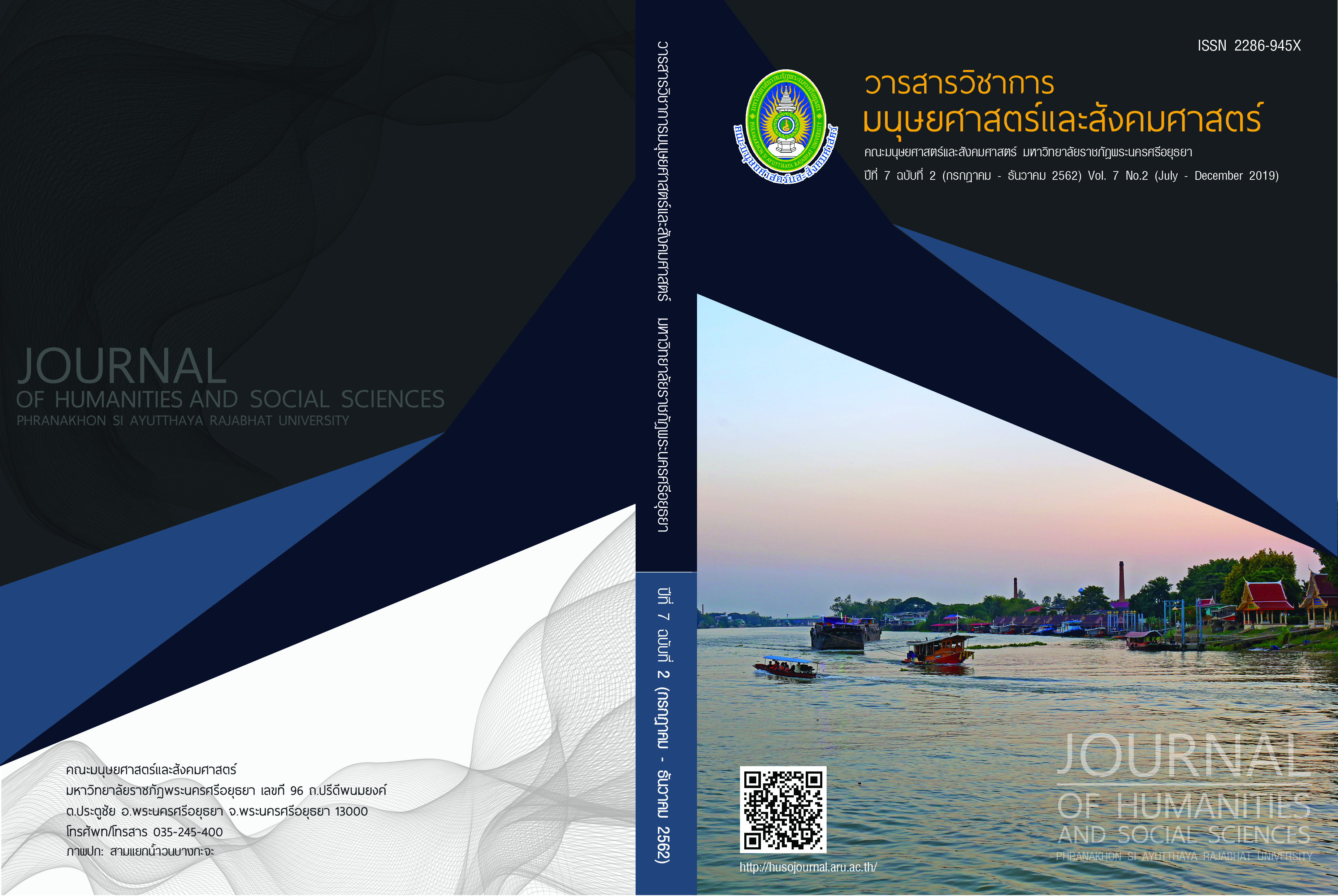ภาพตัวแทน : ความจริง : ศิลปะ : สุนทรียะ
Main Article Content
บทคัดย่อ
ปรับปรุงจากบรรยายสำหรับการประชุมวิชาการมนุษยศาสตร์ มหาวิทยาลัยศรีนครินทรวิโรฒ วันที่ 9 กันยายน พ.ศ. 2560
Article Details

อนุญาตภายใต้เงื่อนไข Creative Commons Attribution-NonCommercial 4.0 International License.
บทความที่ได้รับการตีพิมพ์เป็นลิขสิทธิ์ของ คณะมนุษยศาสตร์และสังคมศาสตร์ มหาวิทยาลัยราชภัฏพระนครศรีอยุธยา
ทัศนะและความคิดเห็นที่ปรากฏในบทความในวารสารฯ ถือเป็นความรับผิดชอบของผู้เขียนบทความ และไม่ได้เป็นทัศนะและความรับผิดชอบของ กองบรรณาธิการ หรือ ของ มหาวิทยาลัยราชภัฏพระนครศรีอยุธยา
เอกสารอ้างอิง
Barb Stuckey, Taste Surprising Stories and Science about Why Food Tastes Good, (New York: Atria, 2012), p. 55.
Brook Ziporyn, Coherence in Early Chinese Thought: Prolegomena to the Study of Li, (Albany: State University of New York Press, 2012), p. 14.
Francois Jullien, Detour and Access Strategies of Meaning in China and Greece, translated by Sophie Hawkes, (New York: Zone Books, 2004), p. 142.
Francois Jullien, “Did Philosophers Have to Become Fixated on Truth?”, Critical Inquiry, Vol. 28, No. 4 (Summer, 2002), pp. 803-824.
Francois Jullien, This Strange Idea of the Beautiful, translated by Kryzstof Fijalkowski and Michael Richardson, (New York: Seagull Books, 2016), p. 37.
Harrie A. Vanderstappen, The Landscape Painting of China: Musings of a Journeyman, edited by Roger E. Covey, (Gainville: University of Florida Press, 2014), pp. 6-7.
Li Zehou, The Chinese Aesthetic Tradition, translated by Maija Bell Samei, (Honolulu: University of Hawaii Press, 2010), p. 1.
Patricia Bjaaland Welch, Chinese Art A Guide to Motif and Visual Imagery, (Tokyo: Tuttle Publishing, 2008), p. 17.
Rudolf Arnheim, “ Ancient Chinese Aesthetics and Its Modernity, British Journal of Aesthetics, Vol. 37, Issue 2 (April, 1997), p. 155.
Wen C. Fong, Beyond Representation Chinese Painting and Calligraphy 8-14th Century, (New York: The Metropolitan Museum of Art, 1992), p. 5.
William Pietz, “The Problem of Fetish, I”, RES: Anthropology and Aesthetics, No. 9, (Spring, 1985), pp. 5-17; “The Problem of Fetish, II”, RES: Anthropology and Aesthetics, No. 13 (Spring, 1987), pp. 23-45.


